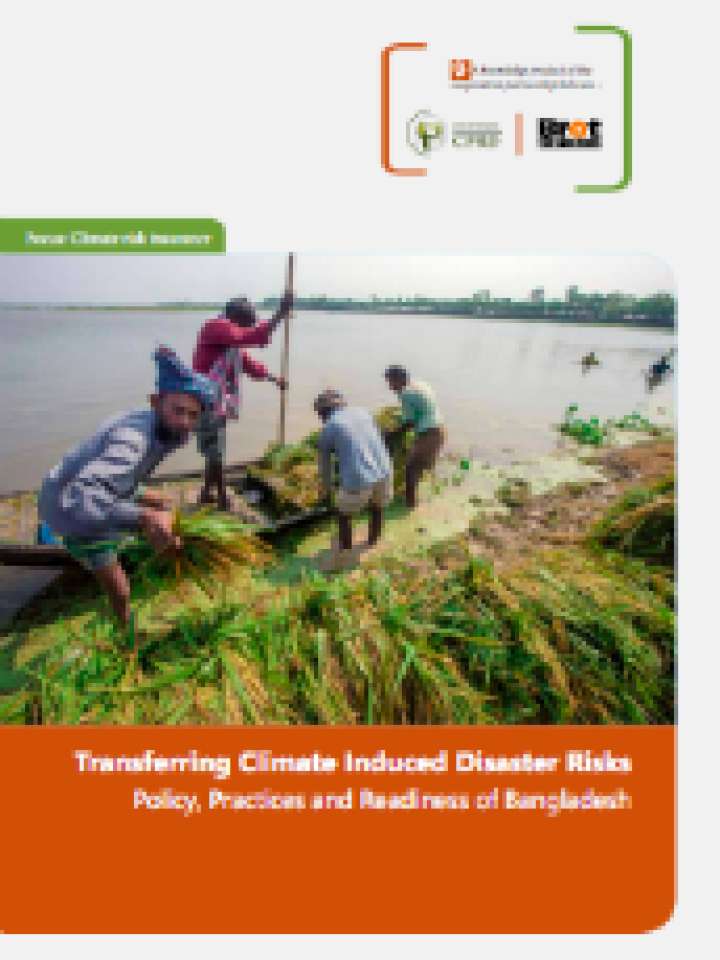Transferring climate induced disaster risks: policy, practices and readiness of Bangladesh
The report summarizes nearly three decades of UNFCCC negotiation on loss and damage (L&D), analyses insurance and other risk transfer mechanisms, provides an overview on the disaster risk financing and risk transfer practices of Bangladesh, and finally summarizes a study findings on the readiness of Bangladesh's insurance sector in transferring climate/disaster risk.
The report includes 4 chapters:
Chapter 1 summarizes nearly three decades of UNFCCC negotiation on L&D and provides an analysis regarding how the political standpoint (as well as Prejudice) of some of the country Parties promoted climate risk insurance (CRI) as an ultimate choice for addressing L&Ds.
Chapter 2 analyses insurance and other risk transfer mechanisms, summarizes benefits, challenges and limitations of the existing risk transfer mechanisms in the context of complicated risk scenario of climate change induced sudden, slow and unusual events;
Chapter 3 analyses Bangladesh’s overall vulnerability to the impacts of climate change, briefly describes the L&Ds scenario and protection gaps, provides an overview on disaster risk financing and risk transfer practices; and,
Chapter 4 summarizes a study findings on the readiness of the Bangladesh’s insurance sector for introducing CRI to transfer risk of disaster losses.
While the study recognizes significant role of CRI in compensating/offsetting climate-induced disaster losses, however most of the insurance industries are found neither prepared nor motivated to develop a new insurance scheme for transferring climate induced disaster losses from the country’s key sector (e.g. agriculture). The study concludes with several recommendations in the context of introducing an effective and pro-poor CRI in Bangladesh.
Explore further
